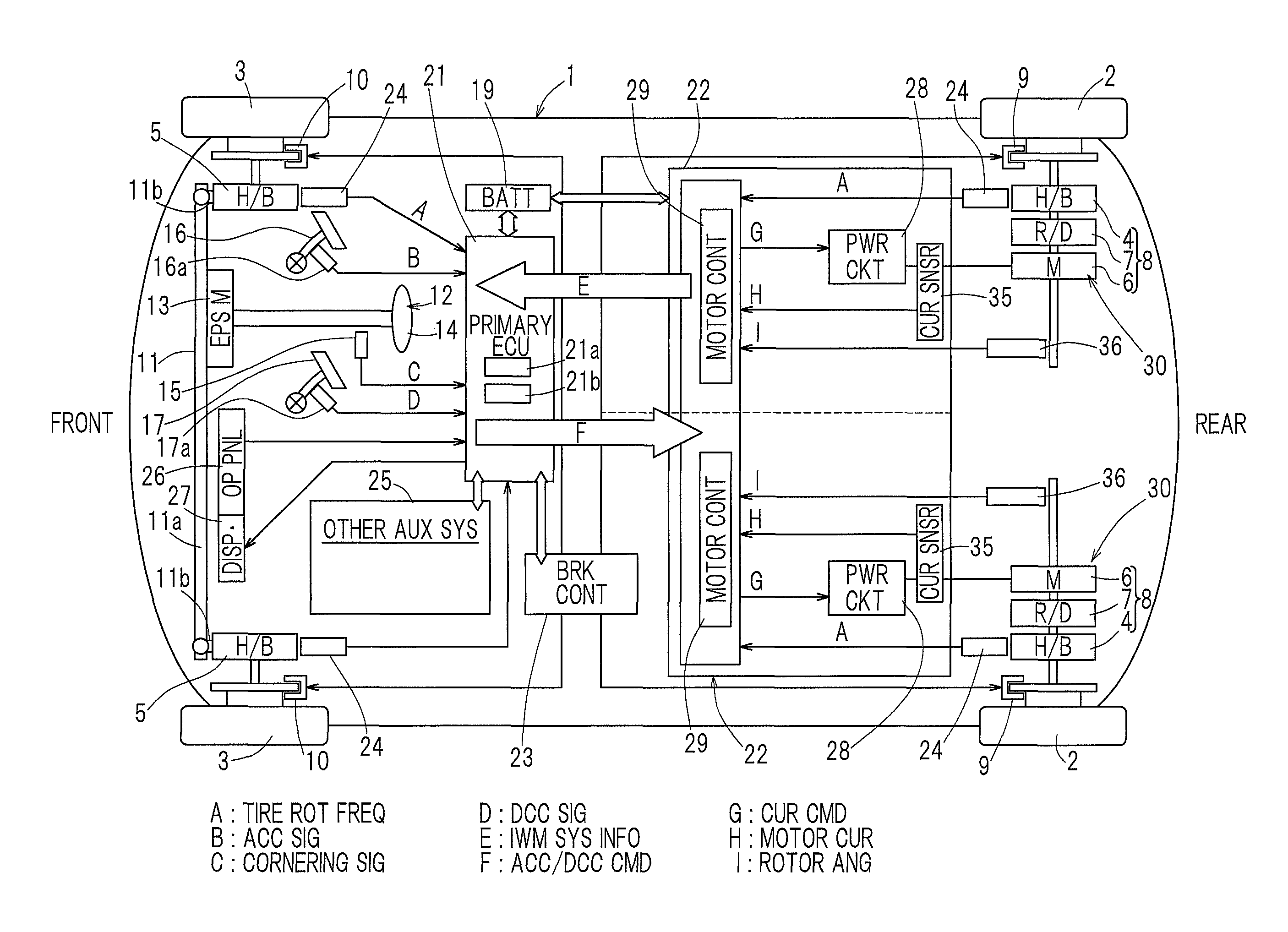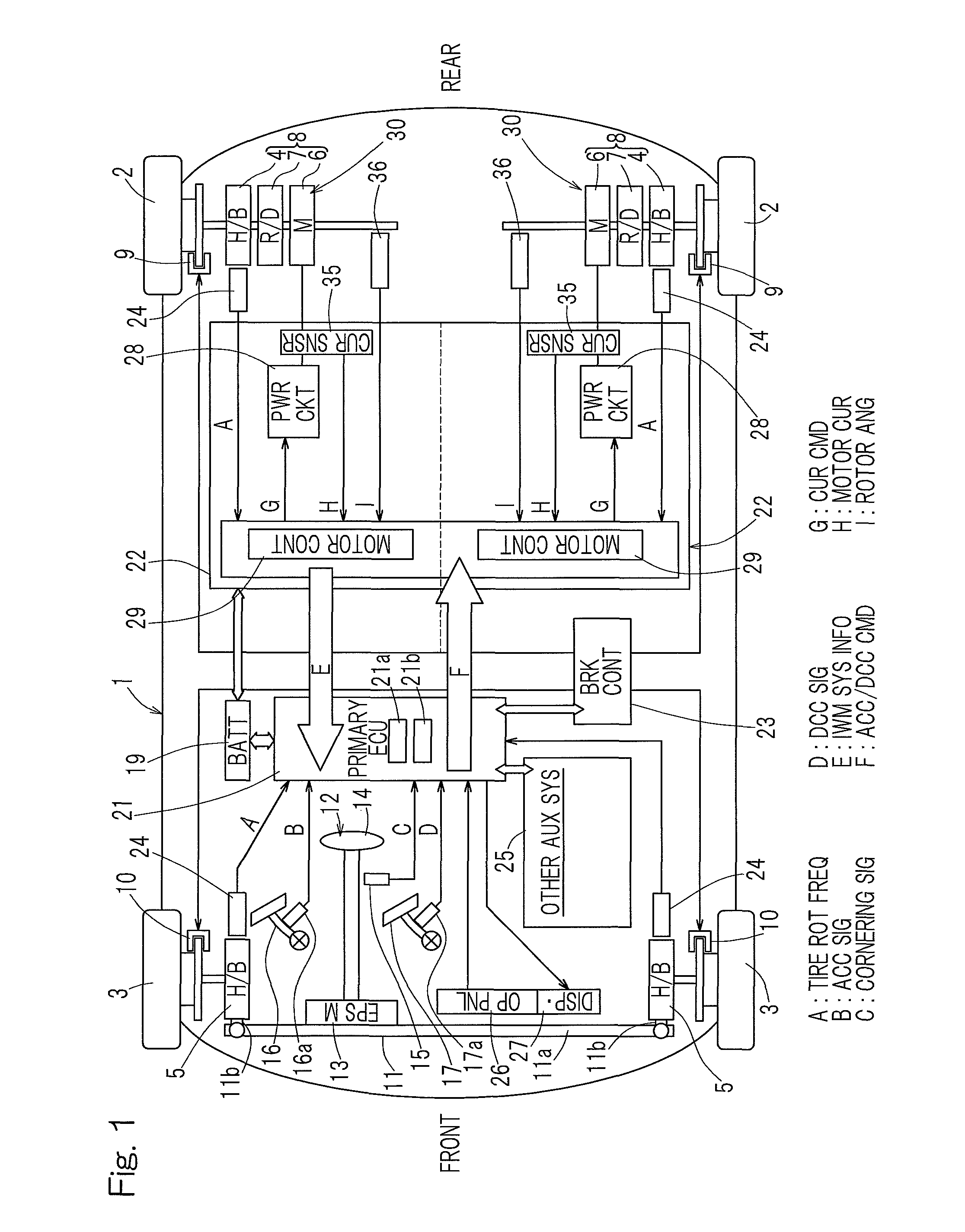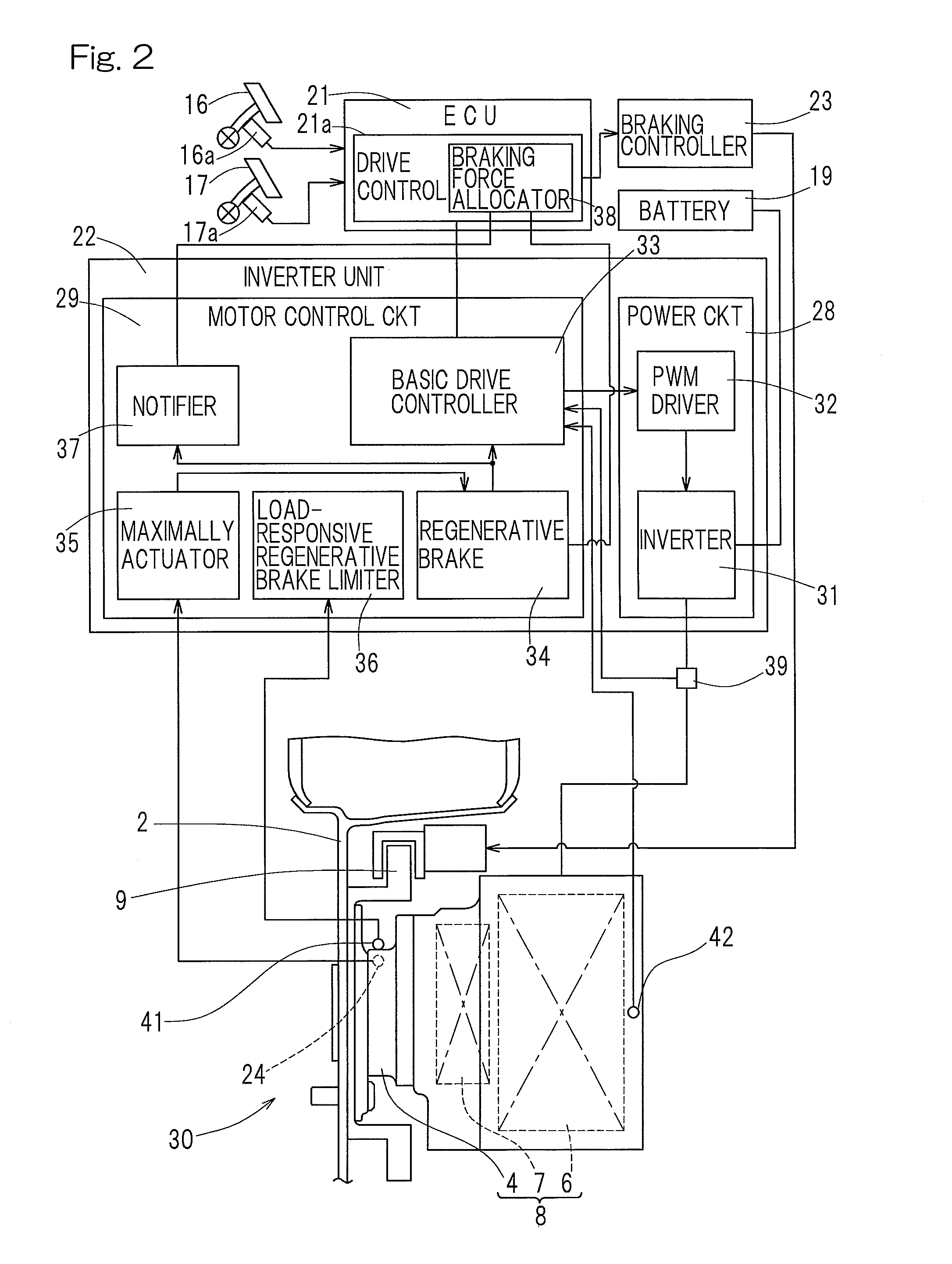Electric vehicle
a technology of electric vehicles and wheels, applied in the direction of electric devices, braking components, braking systems, etc., can solve the problems of difficulty in ensuring the safety of electric vehicles, and inability to allocate torque among different wheels, so as to minimize the possibility of tire slippage and avoid possible slippage
- Summary
- Abstract
- Description
- Claims
- Application Information
AI Technical Summary
Benefits of technology
Problems solved by technology
Method used
Image
Examples
Embodiment Construction
[0032]An embodiment of the present invention will now be described in connection with FIG. 1 to FIG. 11. The illustrated electric vehicle is a four-wheel vehicle that includes a vehicle body 1 with left and right rear wheels 2 and left and right front wheels 3, with the rear wheels being drive wheels and the front wheels being steered driven wheels. The wheels 2, 3—that is, drive wheels and driven wheels, respectively—are all equipped with tires and are supported by the vehicle body 1 via respective wheel bearing units 4, 5. In FIG. 1, the wheel bearing units 4, 5 are labeled with “H / B” which is an abbreviation for hub bearing. The left and right drive wheels 2, 2 may be driven by respective independent traction motor units 6, 6. Rotation of a motor unit 6 may be transmitted via a reducer unit 7 and through a wheel bearing unit 4 to a wheel 2. The motor unit 6, the reducer unit 7 and the wheel bearing unit 4 may be integrally assembled with each other to form an in-wheel motor drive...
PUM
 Login to View More
Login to View More Abstract
Description
Claims
Application Information
 Login to View More
Login to View More - R&D Engineer
- R&D Manager
- IP Professional
- Industry Leading Data Capabilities
- Powerful AI technology
- Patent DNA Extraction
Browse by: Latest US Patents, China's latest patents, Technical Efficacy Thesaurus, Application Domain, Technology Topic, Popular Technical Reports.
© 2024 PatSnap. All rights reserved.Legal|Privacy policy|Modern Slavery Act Transparency Statement|Sitemap|About US| Contact US: help@patsnap.com










